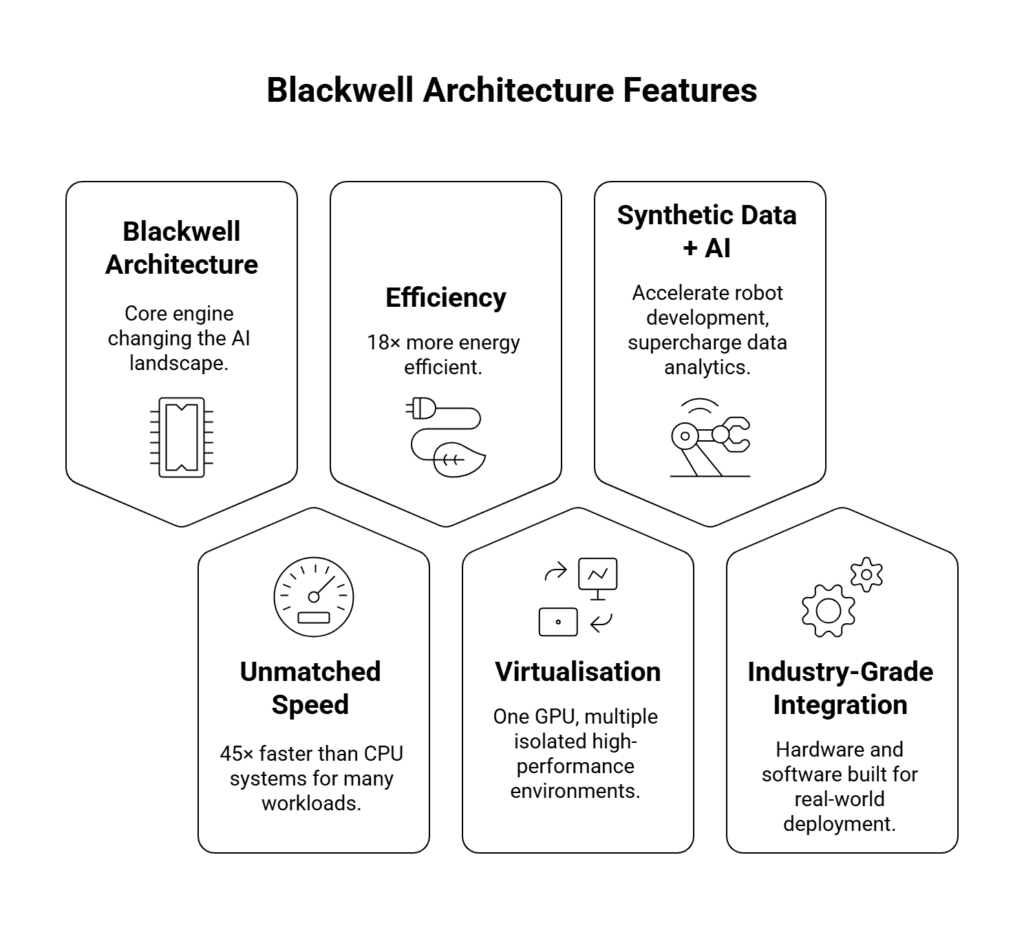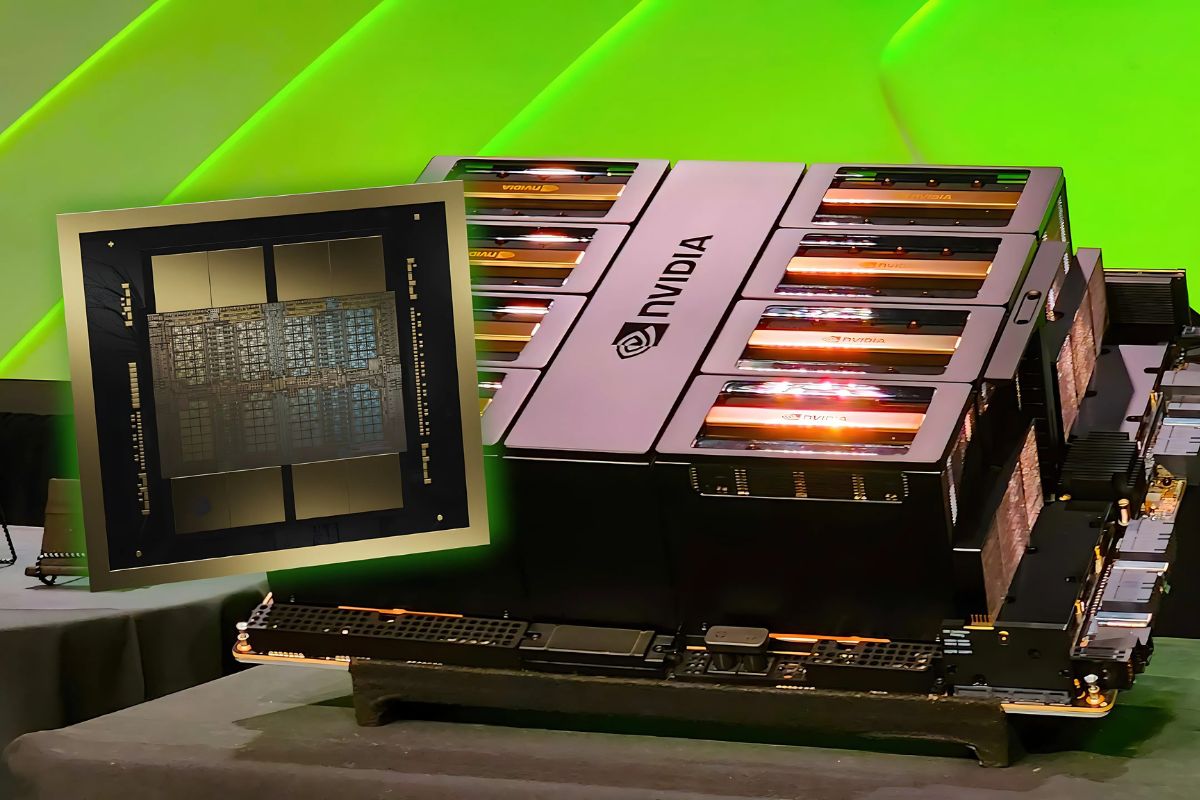NVIDIA Broadens the Blackwell Vision
NVIDIA, the powerhouse of graphics and artificial intelligence hardware, is rewriting the rules of enterprise computing. The company has just announced an expanded lineup of Blackwell-powered RTX PRO 6000 Server Edition GPUs for business customers, marking a significant leap forward for artificial intelligence (AI), industrial automation, and robotics. Funny thing is, what once seemed like the stuff of science fiction is now steadily making its way into crowded server rooms and humming industrial floors worldwide.
A New Standard for Enterprise AI Servers
Now, let’s get into what’s changing. NVIDIA’s latest Blackwell-powered servers aren’t just about flexing raw GPU muscle. They’re designed to bring unprecedented acceleration and efficiency to everything from AI training and content creation to complex data analysis and real-time robotics.
The hardware, soon to be available in enterprise systems from industry giants like Cisco, Dell Technologies, HPE, Lenovo, and Supermicro, is engineered for serious work:
- 2U server configurations, scalable and space-efficient
- Up to eight GPUs per server
- Targeted at data-heavy sectors demanding energy-smart yet high-performance solutions
As Jensen Huang, NVIDIA’s founder and CEO, notes: “AI is reinventing computing for the first time in 60 years, what started in the cloud is now transforming the architecture of on-premises data centres.” That’s not just marketing speak. It’s a hint at where the puck is heading.
Why Blackwell Matters: The Need for Speed and Efficiency
Believe it or not, most business servers today still rely mostly on CPUs. But “GPU acceleration”, NVIDIA’s core proposition, offers a seismic performance and efficiency advantage in modern workloads:
- According to NVIDIA, its new Server Edition GPU delivers
- Up to 45× faster performance over CPU-only systems
- 18× greater energy efficiency
- Up to 45× faster performance over CPU-only systems
It’s not just about number crunching, either. These gains are especially key in the era of “AI factories”, think enterprises where space, power, and airflow are at a premium.
Dell’s Adoption
For example, Dell’s updated AI Data Platform is leveraging NVIDIA RTX PRO 6000 GPUs in PowerEdge R7725 servers. These systems come loaded with NVIDIA’s AI Enterprise software suite and next-gen networking, essentially, everything you need for demanding AI workloads under one hood.
Inside the Blackwell Engine: What’s New?
Let’s peek under the hood for a minute. The heart of the new servers is NVIDIA’s innovative Blackwell architecture, which pushes the limits on several fronts:
- Fifth-generation Tensor Cores
- Second-generation Transformer Engine, boasting ultra-fast FP4 (4-bit floating point) precision
- Fourth-generation RTX tech for real-time rendering, up to four times the performance of previous L40S GPUs
- Virtualisation & Multi-Instance GPU (MIG): Carve up each GPU into four separate, isolated environments
- Way more energy-efficient for power-conscious data centers
That’s not just nerdy lingo; the upshot is, you get faster, denser, and cooler-running hardware for the most demanding use cases.
More Than Just Number Crunching: Digital Twins, Robotics, and Simulation
Here’s where it gets especially interesting.
These RTX PRO Servers aren’t just about blazing through traditional analytics or rendering. NVIDIA’s vision is for them to be the backbone for “physical AI”, the kind that blurs digital and real-world boundaries.
Picture this:
- Run digital twin simulations, digital copies of factories, cars, or entire cities, for safer, smarter planning.
- Power robot training routines at a massive scale using synthetic data.
- Accelerate “AI-powered” industrial inspection, surveillance, and even surgical robotics.
Key Toolkits & Software
To bring this all together, NVIDIA is updating its key platforms:
- Omniverse: Expanded SDKs, with support for MuJoCo (MJCF) and Universal Scene Description (OpenUSD).
- Cosmos World Foundation Models: Generate synthetic training data for robots using text, image, or video prompts, at scale.
- NuRec Libraries: Real-time, ray-traced 3D Gaussian splatting, tech that helps models learn from sensor data for more realistic robot simulations.
Already, names like Boston Dynamics, Amazon Devices, and automakers like Ford and Porsche are adopting these frameworks to supercharge everything from self-driving car simulations to smart factories.
Unlocking the Power of Synthetic Data and Vision-Language AI
AI doesn’t just need raw data anymore; it needs smart, realistic data.
Enter Cosmos World Foundation Models and the new Cosmos Transfer-2, a model built to accelerate image data creation for robot training. This lets companies like Lightwheel and Moon Surgical rapidly generate tailored training sets for increasingly capable robots and vision systems.
But wait, there’s more: NVIDIA recently introduced Cosmos Reason, a 7-billion-parameter vision language model blending text, visual cues, and basic physics. Think AI agents that can curate their own training sets, plan multistep robotic tasks, and comb through mountains of video data for relevant insights.
From traffic monitoring to autonomous vehicle analytics for companies like Uber and Magna, the impact is spreading fast.
AI Agents & New Large Language Model Support: The Llama Nemotron Super
Let’s switch gears to perhaps the buzziest part: large language models (LLMs). Blackwell RTX PRO Servers have the power to run mammoth new models, like the Llama Nemotron Super, at jaw-dropping speed and efficiency:
- Running Llama Nemotron Super with NVFP4 precision on a single RTX PRO 6000 GPU: up to 3× better price-performance compared to FP8 on NVIDIA’s previous H100 GPUs.
That’s real-world value, fewer servers (and, crucially, lower energy bills) for the same or better AI firepower.
Key Features at a Glance
To sum up, if you want a quick look at what sets these servers apart:

- Blackwell Architecture: The core engine that’s changing the AI landscape
- Unmatched Speed: 45× faster than CPU systems for many workloads
- Efficiency: 18× more energy efficient
- Virtualisation: One GPU, multiple isolated high-performance environments
- Synthetic Data + Vision-Language AI: Accelerate robot development, supercharge data analytics
- Industry-Grade Integration: Hardware and software built for real-world deployment, now vetted by automotive, robotics, medical, and manufacturing leaders
Broader Context: Why This Launch Is a Big Deal
Funny how things snowball, isn’t it? Just a decade ago, talk of AI-enabled factories or driverless cars felt futuristic. Now, NVIDIA is in the driver’s seat, shaping how next-gen data centers, enterprises, and industrial floors get their brainpower, without blowing the electric bill or cramping on space.
With major server makers like Cisco, Dell, HPE, Lenovo, and Supermicro on board, the Blackwell rollout is less a product launch and more a reset for what’s possible in enterprise IT. We’re witnessing:
- AI crossing from cloud-only to hybrid and on-premises worlds
- The rise of “AI factories” where clever hardware design and smart software frameworks meet
- Robotics is leaving research labs, heading into warehouses, operating rooms, and city streets
Real-World Adoption: From Automakers to Cloud
Let’s get specific. Industry leaders such as Boston Dynamics, Figure AI, Hexagon, Lightwheel, Moon Surgical, Skild AI, Ford, Porsche, Uber, and Magna have all jumped in. Applications range from autonomous vehicles and traffic monitoring to next-level robot vision and smart manufacturing.
And it’s not just about fancy applications. NVIDIA’s black-and-yellow logo is quickly becoming a blueprint for how to build practical, flexible server infrastructure that can keep up with runaway demand for smarter machines.
What’s Next for NVIDIA’s Blackwell Platform?
So, where do we go from here? Two words: scale and capability.
With every big manufacturer supporting the RTX PRO 6000 Blackwell platform, and with NVIDIA’s software ecosystem only expanding, expect to see rapid adoption across industries that care about:
- Data-driven intelligence (AI, machine learning)
- Simulation and prediction (digital twins, synthetic data)
- Robotics and automation (from warehouses to roads)
If recent trends hold, the next wave of AI growth won’t just be about smarter algorithms. It’ll ride on the back of better, faster, and more efficient platforms, exactly what Blackwell claims to deliver.
Final Thoughts: A New Chapter for Enterprise AI
Bottom line: NVIDIA’s expanded Blackwell-powered RTX PRO Server lineup is rewriting what’s possible for enterprise AI, robotics, and digital simulation. With key partners, game-changing hardware, and an ever-deepening software stack, NVIDIA is making on-site AI as accessible as the cloud, only faster and way more efficient.
And as these systems land in more and more enterprises, expect the gap between “real” and “simulated,” “human” and “machine,” to keep shrinking. That’s the kicker: the future isn’t coming. It’s already spinning up in a server rack near you.








